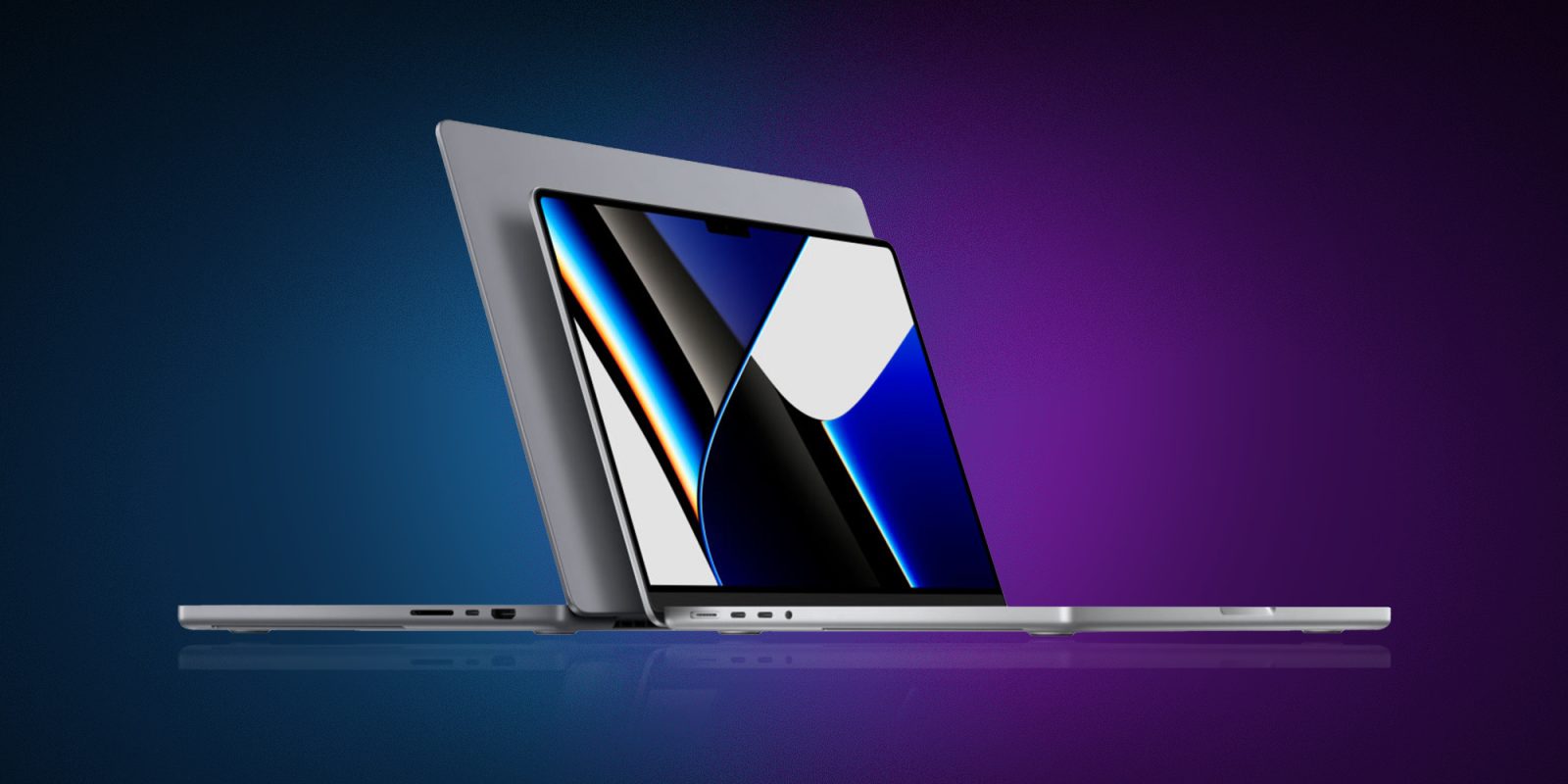Apple is reportedly redesigning the MacBook Pro next year, here’s what we’re expecting
Rumors strongly suggest that Apple will be overhauling the MacBook Pro in 2026, marking five years since the previous redesign that we know and love today. There are three key rumors to follow with this redesigned MacBook Pro, and we’ll be delving into them here.
OLED display
After debuting in the iPad Pro in 2024, Apple is expected to introduce OLED display technology to the MacBook Pro for the very first time with the redesign in 2026. This’ll provide higher brightness, better contrast ratios, and nicer colors to the MacBook Pro lineup for the very first time.
Plus, according to TheElec, Apple will be using the same Tandem OLED display tech as the aforementioned iPad Pro:
The OLED MacBook Air is also expected to get a standard single-stack display, rather than the more sophisticated Two-Stack Tandem displays we reported on for the MacBook Pro.
Single-stack displays have one red, green and blue layer, while two-stack tandem OLED has a second RGB layer. Two layers stacked in tandem increases the brightness of the screen, while also increasing longevity.
While transitioning to OLED, Apple may also ditch the notch, in favor of a smaller camera hole cutout. This information comes from Omdia, who describes it as a “rounded corner + hole cut.”
The report doesn’t specify whether or not it’ll be a single hole punch, or something more similar to Dynamic Island on the iPhone. Either way, there won’t be as chunky of a cutout in your MacBook Pro display once the redesign arrives.
Thinner design
According to Bloomberg, Apple will be adopting a new, thinner design with the 2026 MacBook Pro. There aren’t many other details specified, so it’s unclear if the overall chassis design will change:
Though Apple has continued to enhance the product with new chips and other internal improvements, the MacBook Pro probably won’t get another true overhaul until 2026. The company had once hoped to release this new version in 2025 — with a thinner design and a move to crisper OLED screens — but there were delays related to the display technology.
Cutting-edge M6 chip
Apple will also debut the M6 family of chips in this new MacBook Pro redesign. Currently, M6 is anticipated to be the first generation of Apple Silicon to adopt TSMC’s 2nm technology, alongside the A20 chip for iPhone.
As per usual, we should see M6, M6 Pro, and M6 Max versions of the MacBook Pro, in both 14-inch and 16-inch sizes. With a new process node, we should see noticeable performance and efficiency gains.
Wrap up
Overall, the biggest feature of this upgrade is certainly the fact that the MacBook Pro will be adopting OLED. That said, I’ll certainly appreciate the thinner design – particularly on the 16-inch MacBook Pro, which currently comes in at 4.7 pounds.
In case you aren’t too fond of waiting around a year and a half to buy a new MacBook Pro, there are some good discounts on the current M4 MacBook Pro models now that they’re around halfway through their lifespan. You can pick up an M4 14-inch for an M4 Pro 14-inch for or an M4 Pro 16-inch for These are all around off compared to their typical prices.
My favorite Apple accessory recommendations:
Follow Michael: X/Twitter, Bluesky, Instagram
Add 9to5Mac to your Google News feed.
FTC: We use income earning auto affiliate links. More.You’re reading 9to5Mac — experts who break news about Apple and its surrounding ecosystem, day after day. Be sure to check out our homepage for all the latest news, and follow 9to5Mac on Twitter, Facebook, and LinkedIn to stay in the loop. Don’t know where to start? Check out our exclusive stories, reviews, how-tos, and subscribe to our YouTube channel
#apple #reportedly #redesigning #macbook #pro
Apple is reportedly redesigning the MacBook Pro next year, here’s what we’re expecting
Rumors strongly suggest that Apple will be overhauling the MacBook Pro in 2026, marking five years since the previous redesign that we know and love today. There are three key rumors to follow with this redesigned MacBook Pro, and we’ll be delving into them here.
OLED display
After debuting in the iPad Pro in 2024, Apple is expected to introduce OLED display technology to the MacBook Pro for the very first time with the redesign in 2026. This’ll provide higher brightness, better contrast ratios, and nicer colors to the MacBook Pro lineup for the very first time.
Plus, according to TheElec, Apple will be using the same Tandem OLED display tech as the aforementioned iPad Pro:
The OLED MacBook Air is also expected to get a standard single-stack display, rather than the more sophisticated Two-Stack Tandem displays we reported on for the MacBook Pro.
Single-stack displays have one red, green and blue layer, while two-stack tandem OLED has a second RGB layer. Two layers stacked in tandem increases the brightness of the screen, while also increasing longevity.
While transitioning to OLED, Apple may also ditch the notch, in favor of a smaller camera hole cutout. This information comes from Omdia, who describes it as a “rounded corner + hole cut.”
The report doesn’t specify whether or not it’ll be a single hole punch, or something more similar to Dynamic Island on the iPhone. Either way, there won’t be as chunky of a cutout in your MacBook Pro display once the redesign arrives.
Thinner design
According to Bloomberg, Apple will be adopting a new, thinner design with the 2026 MacBook Pro. There aren’t many other details specified, so it’s unclear if the overall chassis design will change:
Though Apple has continued to enhance the product with new chips and other internal improvements, the MacBook Pro probably won’t get another true overhaul until 2026. The company had once hoped to release this new version in 2025 — with a thinner design and a move to crisper OLED screens — but there were delays related to the display technology.
Cutting-edge M6 chip
Apple will also debut the M6 family of chips in this new MacBook Pro redesign. Currently, M6 is anticipated to be the first generation of Apple Silicon to adopt TSMC’s 2nm technology, alongside the A20 chip for iPhone.
As per usual, we should see M6, M6 Pro, and M6 Max versions of the MacBook Pro, in both 14-inch and 16-inch sizes. With a new process node, we should see noticeable performance and efficiency gains.
Wrap up
Overall, the biggest feature of this upgrade is certainly the fact that the MacBook Pro will be adopting OLED. That said, I’ll certainly appreciate the thinner design – particularly on the 16-inch MacBook Pro, which currently comes in at 4.7 pounds.
In case you aren’t too fond of waiting around a year and a half to buy a new MacBook Pro, there are some good discounts on the current M4 MacBook Pro models now that they’re around halfway through their lifespan. You can pick up an M4 14-inch for an M4 Pro 14-inch for or an M4 Pro 16-inch for These are all around off compared to their typical prices.
My favorite Apple accessory recommendations:
Follow Michael: X/Twitter, Bluesky, Instagram
Add 9to5Mac to your Google News feed.
FTC: We use income earning auto affiliate links. More.You’re reading 9to5Mac — experts who break news about Apple and its surrounding ecosystem, day after day. Be sure to check out our homepage for all the latest news, and follow 9to5Mac on Twitter, Facebook, and LinkedIn to stay in the loop. Don’t know where to start? Check out our exclusive stories, reviews, how-tos, and subscribe to our YouTube channel
#apple #reportedly #redesigning #macbook #pro
0 Комментарии
·0 Поделились
·0 предпросмотр















